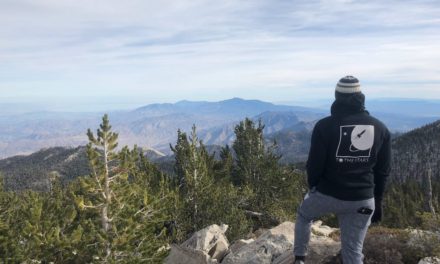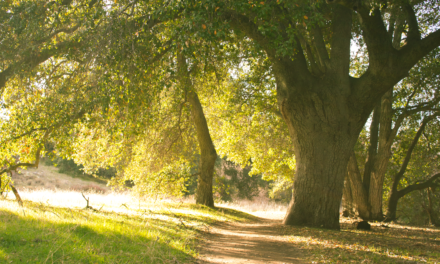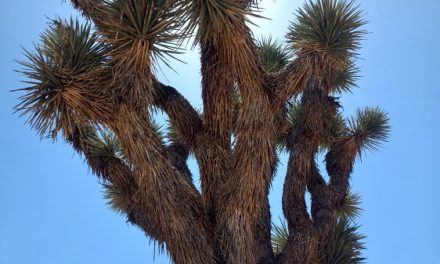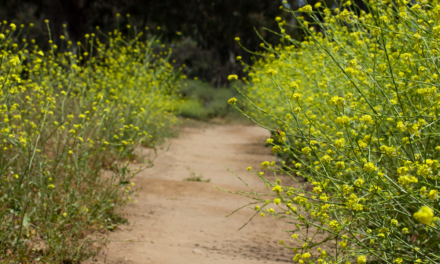Poodle-dog bush is a plant all hikers in the Southern California region should be aware of. While not as commonly known as other poisonous plants, the end result is a painful rash similar to that of poison oak or stinging nettle. This guide will help hikers know all there is about poodle-dog bush, how to avoid it, proper treatment, and when to seek emergency medical attention.
The Definitive Hiking Guide To Poodle-Dog Bush
Eriodictyon parryi, or more commonly known as poodle-dog bush is a poisonous woody shrub. Unlike other toxic plants such as poison oak (sumac or ivy) or stinging nettle, this plant has a very limited geographical range. Poodle-dog bush is entirely native to the State of California. While I have not personally come into contact with this plant, this is a bush all hikers should be aware of.
Poodle-Dog Bush Description
As I mentioned, the plant is a native Californian shrub. It can grow as tall as up to ten feet in height but is usually seen growing several feet tall. The stems grow in clusters with green leaves ranging between 1.5 to 11 inches in length. Despite the plant’s toxin, poodle-dog bush actually puts on a rather nice display of clustered lavender colored flowers. The flowers bloom during the warmer months from June through August. Aside from the flowers, another giveaway is that poodle-dog bush is highly aromatic. Some people have described it as an overpowering marijuana like smell. The scent is more powerful when the plant is in bloom (1).
The range of the plant is mostly limited to Southern California. However, it does extend as far north as San Luis Obispo in the Los Padres National Forest and the southern Sierra Nevada in Sequoia National Forest. The plant is also isolated in a small region in Kings Canyon and some areas of Sequoia National Park (2).
Generally speaking, the bush thrives in elevations between 3,300 and 7,500 feet. As a rule of thumb, if there has been a fire in the area recently, poodle-dog bush is likely. The seeds are dormant until the heat of a fire activates them. The fast growing shrub helps to prevent erosion in recent burn areas until other native vegetation can recover which can take several years.
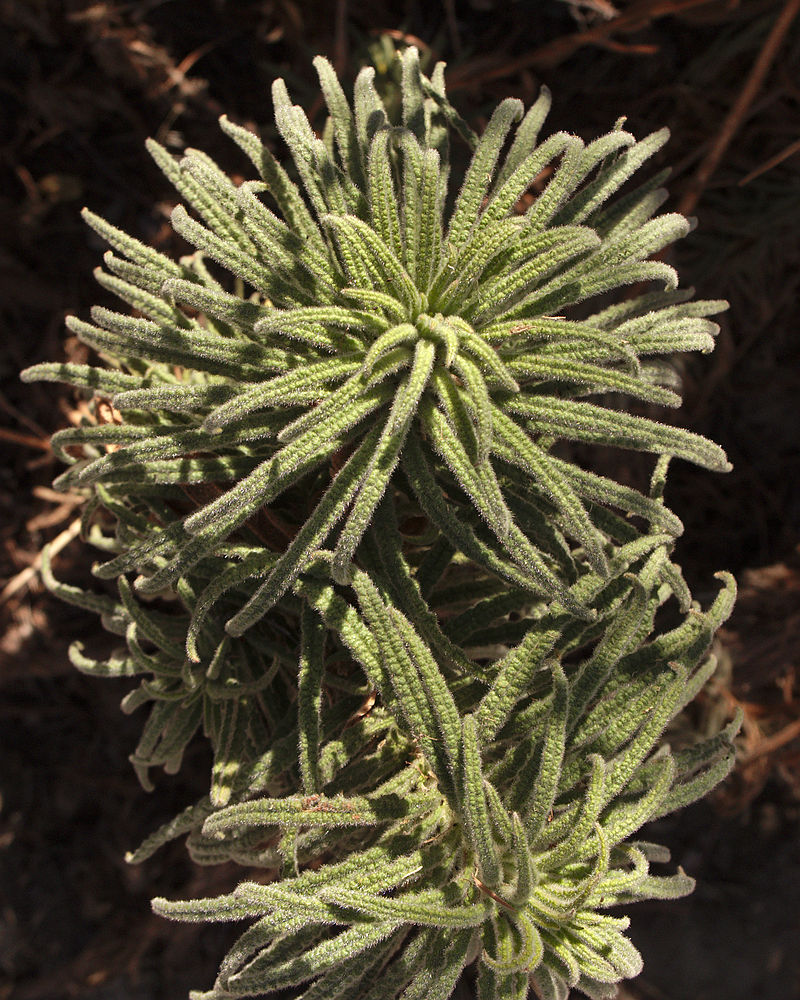
Image Sources: https://en.wikipedia.org/wiki/Eriodictyon_parryi
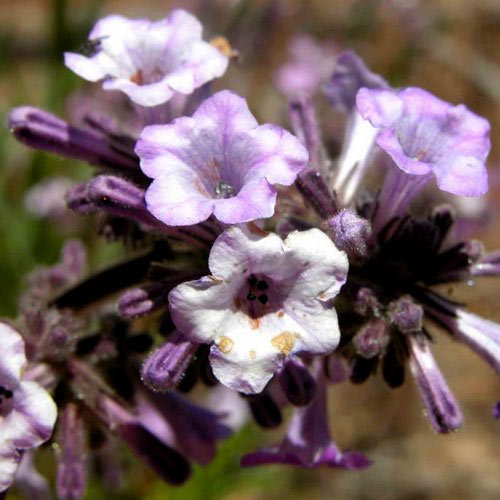
Poodle-Dog Bush Signs and Symtoms
Unlike stinging nettle or poison oak, poodle-dog bush reactions don’t always occur on immediate contact to the plant. There is usually a delayed onset of symptoms anywhere between twelve to forty-eight hours after contact. Hypersensitive individuals will likely have symptoms sooner. General symptoms include streaky hives or small pink blisters where contact was made with the bush. Burning, itching, and redness will also be associated with rash.
The stinging mechanism of poodle-dog bush is through its leaves. The leaves are covered in tiny oily and sticky hairs. When brushed up against, these hairs take hold on clothing, fabrics, or skin. The sticky hairs are coated with an allergenic oil which activates the body’s immune mediated allergic response. Most symptoms related to poodle-dog bush exposure last anywhere from one to three weeks.
Poodle-Dog Bush Treatment
The most important thing to do is to wash the site with warm soap and water as soon as possible to remove any plant oils. Sometimes the hairs from the plant can get injected into the skin. Some people recommend taking a piece of strong tape and pressing it to the skin then removing it to get rid of any extra plant hairs. Be very careful to not to touch the infected area and spread the oils to other parts of your body.
WIth poodle-dog bush anti-histamines like pepcid or benadryl don’t have an effect on burning or itching symptoms. This is because the allergy is not caused by a histamine response within the body. Localized symptoms are best treated with cold compresses using water, aluminum acetate, or calamine lotions. Lukewarm baths with baking soda or colloidal oatmeal can also bring relief (2).
When it comes to topical anesthetics, choose carefully. Products containing benzocaine can actually make the symptoms worse. Anesthetics containing lidocaine are more effective at numbing pain and burning on the rash. However, if you find that topical anesthetics make the symptoms worse, stop using the product (3).
Topical corticosteroids are recommended to decrease itching and redness in serious cases. Look for products containing triamcinolone 0.1% or clobetasol 0.05%. Oral steroids such as prednisone are also recommended if topical steroids are ineffective. While benadryl may not help, it might make your nights more comfortable for the drowsiness sleep factor (3).
When To Seek Emergency Medical Treatment
The majority of poodle-dog bush allergic reactions are very minor. However, like with all allergies, there is always the rare possibility for life threatening reactions. These types of reactions are rare and known as anaphylaxis. If there are any symptoms of shortness of breath, wheezing, swelling around the lips or throat, severe rash, fast heart rate, blue or red colored skin, or dizziness, call 911 and get to an emergency room as soon as possible.
Preventing Poodle-Dog Bush Exposure
The most important thing a person can do in preventing running into a poodle-dog bush is to be aware of what the plant looks like. Also pay attention to what kind of conditions the plant is more likely to thrive and grow in. To prevent secondary or repeat exposure, be careful to not touch other parts of your body with any exposed parts.
When it comes to clothing that has come into contact with the plant, take special care of it. Isolate it from all other clothing such as putting it into it’s own separate bag. Only wash contaminated clothing by themselves with warm soap and water. If you suspect your clothes still may contain plant oils even after washing them, it may be best to just throw them away.
Hopefully this guide will be of use to any hikers out there who have unfortunately come into contact with this plant. If you haven’t, let this guide be of use so that you can avoid it. Have you had an experience with poodle-dog bush? Share your experience with other hikers below in one of the comments.
Sources:
- N.a. “Dangerous Plants.” Thru-Hike The Pacific Crest Trail. Alafia River Press. https://www.thruhikethepct.com/plan-your-thru-hike/on-trail-issues/plants/. Accessed 29 February 2020.
- N.a. “Eriodictyon parri. Poodle-Dog Bush.” Calflora. Calflora. 2020. https://www.calflora.org//cgi-bin/species_query.cgi?where-taxon=Eriodictyon+parryi. Accessed 1 March 2020.
- Czaplicki, C. “Contact Dermatitis From Eriodictyon parri: A Novel Cause of Contact Dermatitis in California. Wilderness & Environmental Medicine, vol. 24, 2013, pp. 253-256, https://www.wemjournal.org/article/S1080-6032(13)00004-5/pdf. Accessed 25 March 2020.

